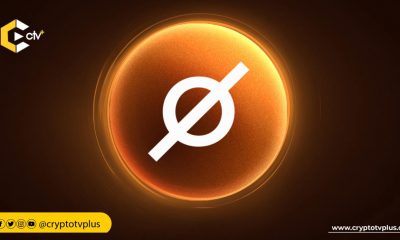News
Sharding Coming: Vitalik Buterin Announces

Vitalik Buterin who is the creator of ethereum has announced “SHARDING” the much-awaited scaling solution for the Ethereum blockchain protocol.
SHARDING, WHAT DOES IT MEAN?
Sharding is a solution that optimizes the process of verifying transactions and smart contracts by splitting the blockchain network into partitions called shards. Instead of having every single node go through the entire transaction history of the Ethereum blockchain network, Sharding allows certain nodes to be assigned to certain shards, optimizing the process of nodes verifying transactions.
HOW IT WORKS
Currently, in all blockchain protocols each node stores all states (account balances, contract code and storage, etc.) and processes all transactions. This provides a large amount of security, but greatly limits scalability: a blockchain cannot process more transactions than a single node can. In large part because of this, Bitcoin is limited to ~3-7 transactions per second, Ethereum to 7-15, etc. However, this poses a question: are there ways to create a new mechanism, where only small subset of nodes verifies each transaction? As long as there are sufficiently many nodes verifying each transaction that the system is still highly secure, but a sufficiently small percentage of the total validator set that the system can process many transactions in parallel, could we not use such a technique to greatly increase a blockchain’s throughput?
Previously, James Ray, an Ethereum developer working on a scaling solution called Drops of Diamond, said that the requirement of nodes to verify all transactions in a blockchain network limits the ability of the blockchain to scale. He noted:
Based on the restrictions of scaling, that is why Bitcoin is limited to ~3-7 transactions per second, while Ethereum is 7-15 transactions per second etc. However, this poses a question: are there ways to create a new mechanism, where only small subset of nodes verifies each transaction?” With services from the likes CryptoKitties and decentralized exchanges such as Kyber Network and AirSwap broadcast substantially large amounts of transactions to the Ethereum network per second, even with the use of off-chain methods that reduce the burden on the main chain.
According to CCN.com, On Reddit Ethereum, an online community wherein Ethereum users, investors, enthusiasts, and developers discuss various projects and solutions, Buterin published a more in-depth description of the proof of concept he released this week.
According to Buterin, the fundamental idea of the current version of Sharding’s proof of concept surrounds the implementation of a proof-of-stake beacon chain or full Casper, that is merged into the main Ethereum blockchain network.
“The basic idea is based on a concept of dependent fork choice rules. First, there is a proof of stake beacon chain (in phase 4, aka full casper, this will just be merged into the main chain), which is tied to the main chain; every beacon chain block must specify a recent main chain block, and that beacon chain block being part of the canonical chain is conditional on the referenced main chain block being part of the canonical main chain,” explained Buterin.
He added that the proof-of-stake beacon chain with Sharding enabled can issue new blocks every two to eight seconds, which is significantly faster than existing proof-of-work blockchains like bitcoin, which has an average block time of 10 minutes.
SCALING IS REQUIRED
In order for Ethereum to support decentralized applications with millions of active users, it will need to improve by more than 100-fold in terms of scalability; Coinbase co-founder Fred Ehrsam said. Currently, the expectations are high as developers expect Sharding, Casper, and Plasma to bring the scalability of Ethereum to the next level to support large-scale decentralized applications and smart contracts.
Do you believe this scaling would help improve transactions? Post your comments, idea and contributions in the comment section below or on our social media platforms.
Image credit: Hacked
Disclaimer:
The Information provided on the website is designed to provide helpful information regarding cryptocurrency subjects. The content is not meant to be used, nor should it be used as a basis, foundational knowledge or prerequisite for decision making regards trading. Always do your own research and due diligence before placing a trade. We are not liable for any outcome based on any content found on the site.

























1 Comment